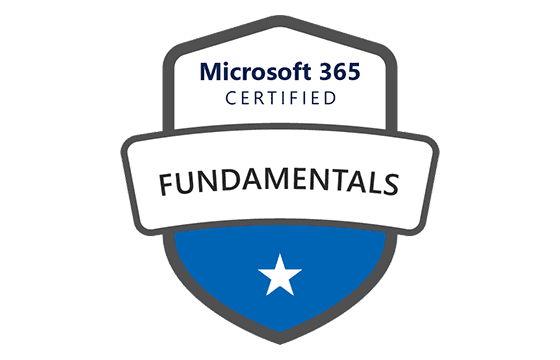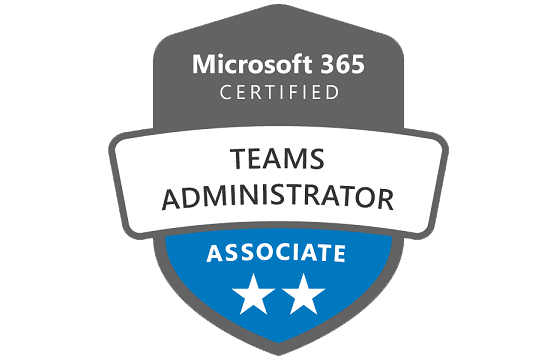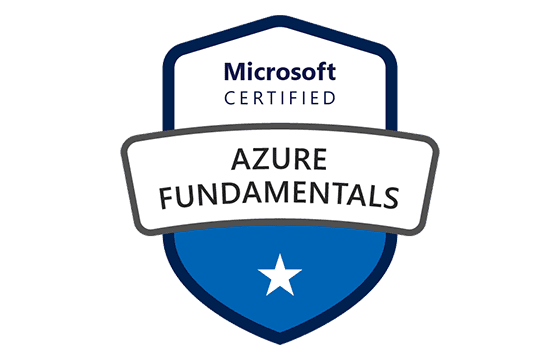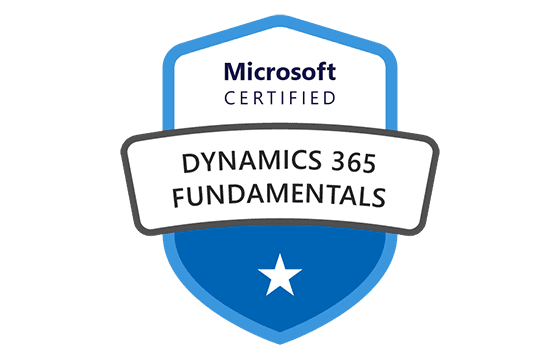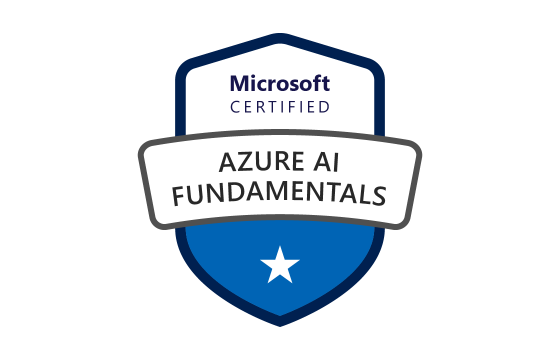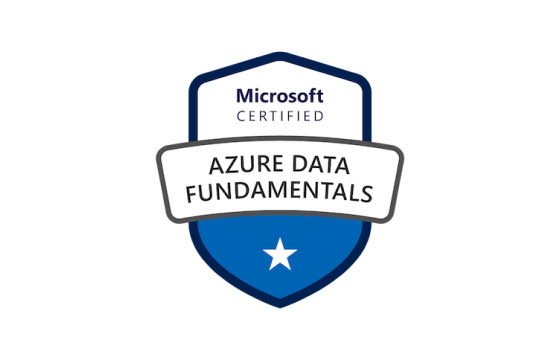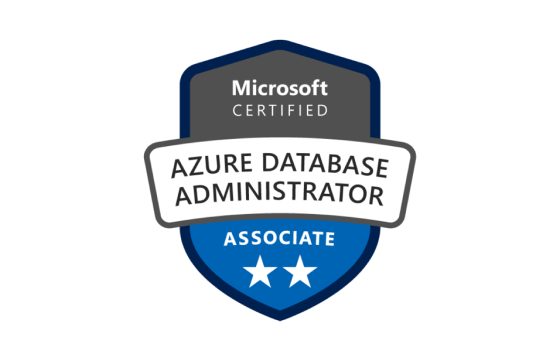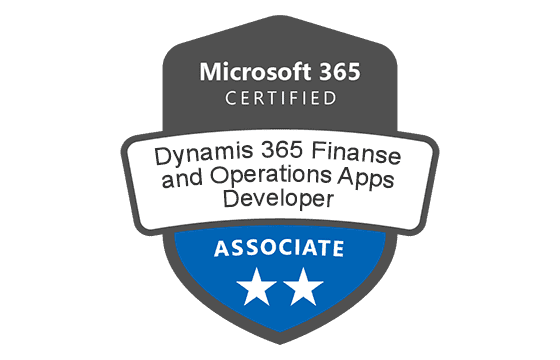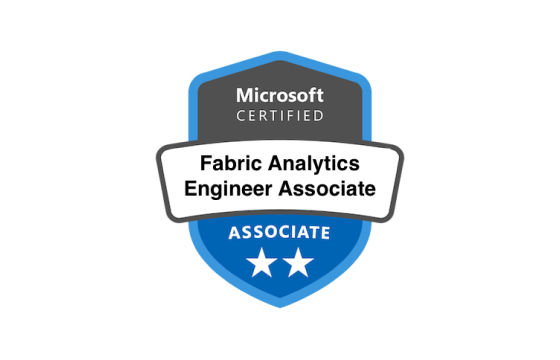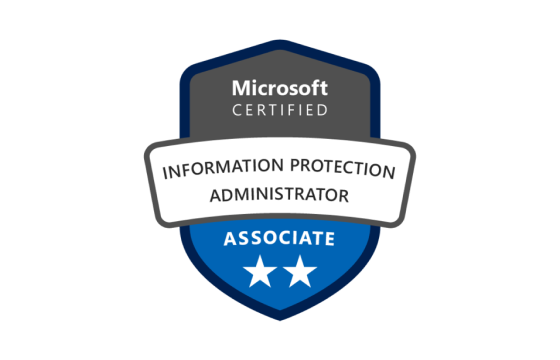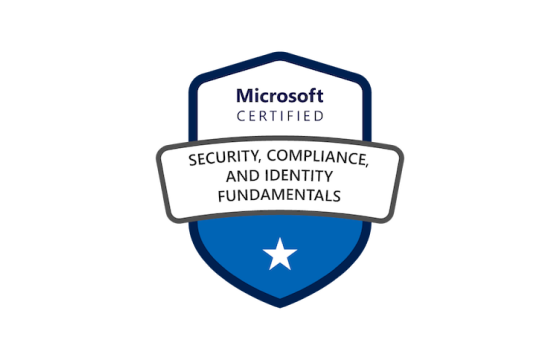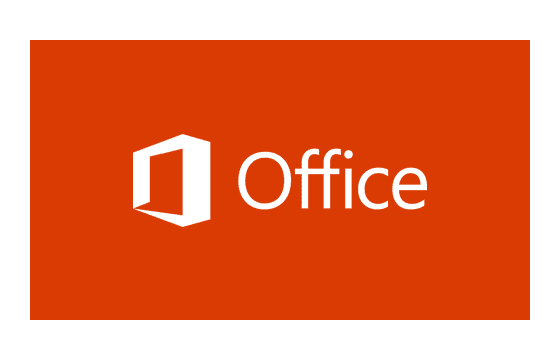Pass Your Microsoft Certified: Azure AI Engineer Associate Certification Easy!
Microsoft Certified: Azure AI Engineer Associate Certification Exams Questions & Answers, Accurate & Verified By IT Experts
Instant Download, Free Fast Updates, 99.6% Pass Rate.
Download Free Microsoft Certified: Azure AI Engineer Associate Practice Test Questions VCE Files
| Exam | Title | Files |
|---|---|---|
Exam AI-102 |
Title Designing and Implementing a Microsoft Azure AI Solution |
Files 6 |
Microsoft Certified: Azure AI Engineer Associate Certification Exam Dumps & Practice Test Questions
Prepare with top-notch Microsoft Certified: Azure AI Engineer Associate certification practice test questions and answers, vce exam dumps, study guide, video training course from ExamCollection. All Microsoft Certified: Azure AI Engineer Associate certification exam dumps & practice test questions and answers are uploaded by users who have passed the exam themselves and formatted them into vce file format.
Microsoft Certified: The Complete Guide to the Azure AI Engineer Associate Certification
Artificial intelligence is changing the way businesses operate and how individuals interact with technology. From chatbots that respond instantly to customer queries, to recommendation engines that predict what people want before they know it, AI is becoming a core driver of digital transformation. With Microsoft Azure leading the charge in enterprise cloud services, there is a growing need for professionals who can design, manage, and implement AI solutions within this ecosystem. This demand has given rise to specialized certifications, with the Azure AI Engineer Associate certification standing out as one of the most valuable credentials for aspiring AI professionals.
This certification is designed for individuals who want to validate their ability to use Azure’s AI tools and services to build intelligent applications. It is not just about understanding AI theory but also about applying it to real-world business challenges using Microsoft’s cloud platform. By achieving this certification, candidates prove their capability to integrate cognitive services, knowledge mining, and machine learning models into scalable solutions.
Why the Azure AI Engineer Associate Certification Matters
AI is no longer reserved for research labs or niche industries. It is now at the center of business strategies across healthcare, finance, retail, manufacturing, and beyond. Organizations are using AI to analyze data faster, personalize user experiences, and automate processes that once required extensive human effort. With Azure’s AI services, companies have access to ready-made tools such as natural language processing, speech recognition, and computer vision, which can be customized and deployed at scale.
For professionals, this means that having a credential like the Azure AI Engineer Associate is a clear advantage. It signals to employers that you possess not only theoretical knowledge but also the practical skills needed to implement AI on a widely used platform. In a job market where cloud and AI expertise are in high demand, this certification can serve as a stepping stone to career growth and competitive salaries.
Who Should Pursue the Certification
The Azure AI Engineer Associate certification is ideal for professionals from various backgrounds who are looking to enhance their expertise in AI.
Developers who want to transition into AI-focused roles and need structured training on Azure’s AI tools
Data scientists who already understand machine learning concepts but want to deploy and scale their solutions using Azure services
Cloud professionals aiming to specialize in AI solutions and expand their technical portfolio
IT professionals who manage enterprise solutions and want to integrate AI capabilities into existing applications
Even those new to AI but with a background in software development or data analysis can benefit, as the certification provides a structured way to gain proficiency in Microsoft’s AI ecosystem.
Core Skills Validated by the Certification
Earning the Azure AI Engineer Associate certification validates several critical skills that are essential for modern AI professionals. These include:
Designing AI solutions that use Azure Cognitive Services
Building and deploying machine learning models with Azure Machine Learning
Working with conversational AI to develop bots and intelligent agents
Applying responsible AI principles to ensure ethical use of technology
Integrating AI features into applications while optimizing for performance and scalability
These skills go beyond academic knowledge and highlight the candidate’s ability to apply Azure AI tools in real-world business environments.
Career Benefits of the Certification
Professionals who achieve this certification unlock multiple career opportunities. Since Azure is widely used by enterprises worldwide, there is a constant demand for AI engineers familiar with its services. Career paths include roles such as AI Engineer, Machine Learning Engineer, Cloud AI Specialist, and Solutions Architect with a focus on AI integration.
Salary expectations also make this certification attractive. According to global surveys, professionals with AI expertise and cloud certifications often earn significantly more than their non-certified peers. Employers value the certification because it proves that a candidate is capable of delivering AI-driven solutions that directly support business goals.
Beyond salary, the certification also offers credibility. It is an official recognition from Microsoft, a leading cloud provider, and signals that the certified individual can contribute to projects involving intelligent automation, advanced analytics, and AI application development.
Comparison with Other Microsoft Certifications
While Microsoft offers multiple certifications across cloud, data, and security domains, the Azure AI Engineer Associate certification is distinct because of its focus on applied AI. For instance, the AI-900 certification (Azure AI Fundamentals) is an entry-level credential that introduces the basics of AI and Azure services. It is a good starting point for beginners but does not validate the depth of knowledge required for implementation.
On the other hand, certifications like DP-100 (Azure Data Scientist Associate) are more specialized in advanced machine learning tasks and data science workflows. The AI Engineer Associate sits between these two, focusing on both the deployment and integration of AI solutions, making it an excellent choice for professionals who want to bridge the gap between AI research and application development.
The Growing Demand for AI Engineers
The rapid adoption of cloud computing and AI technologies has created a global shortage of skilled professionals. Organizations across all industries are racing to implement AI-driven solutions, but many face challenges in finding talent with the right combination of skills. This is where certifications play a crucial role. They provide a standardized measure of knowledge and skills, helping employers quickly identify qualified candidates.
AI engineers are particularly sought after because they can translate business needs into technical solutions. They understand both the capabilities of AI and the constraints of enterprise systems, allowing them to design applications that are practical, scalable, and aligned with organizational goals. By earning the Azure AI Engineer Associate certification, professionals place themselves in a strong position to meet this demand.
Real-World Applications of Azure AI
Azure AI services are already being used in industries worldwide to solve critical problems. In healthcare, AI models built on Azure are helping doctors analyze medical images faster, improving diagnostic accuracy. In retail, companies are leveraging AI-powered recommendations and chatbots to enhance customer experiences. Financial institutions are using AI to detect fraudulent transactions in real time, while manufacturers are deploying predictive maintenance systems that reduce downtime and operational costs.
These use cases demonstrate the versatility of Azure AI and highlight why organizations value professionals who can design and implement such solutions. A certified AI engineer can contribute to these projects with confidence, knowing they have both the technical knowledge and official recognition of their skills.
Ethical Considerations in AI
As AI continues to grow, so do concerns about its ethical use. Bias in data, lack of transparency in decision-making, and misuse of automation are some of the challenges that need careful attention. The Azure AI Engineer Associate certification also emphasizes responsible AI, encouraging professionals to design solutions that are fair, transparent, and accountable.
By understanding and applying responsible AI practices, certified professionals ensure that the solutions they build not only deliver business value but also respect privacy, inclusivity, and societal well-being. This ethical dimension adds another layer of importance to the certification, making it relevant for the future of AI adoption.
The Certification as a Career Investment
Earning the Azure AI Engineer Associate certification is more than just passing an exam. It is an investment in long-term career growth. With AI expected to transform industries for decades to come, the skills validated by this certification remain highly relevant.
The certification also provides a foundation for continuous learning. Since Microsoft regularly updates its services and introduces new AI capabilities, certified professionals are encouraged to stay up to date through ongoing training and renewal opportunities. This continuous cycle of learning ensures that AI engineers remain competitive and ready for the evolving demands of the job market.
The Azure AI Engineer Associate certification is a powerful credential for professionals seeking to build a career in artificial intelligence within the Microsoft Azure ecosystem. It combines technical depth with practical application, ensuring that certified individuals can design, implement, and manage AI solutions that solve real business problems.
With the growing demand for AI talent, competitive salaries, and opportunities across industries, this certification serves as a gateway to some of the most exciting roles in technology today. It also reflects a commitment to responsible AI, preparing professionals not only to advance their careers but also to contribute to the ethical adoption of AI worldwide.
For anyone interested in artificial intelligence, cloud computing, or the intersection of both, this certification stands as a valuable career milestone and a stepping stone toward becoming a leader in the rapidly expanding world of AI.
Exam Details and Prerequisites for the Azure AI Engineer Associate Certification
When preparing for any professional certification, understanding the exam structure, requirements, and preparation strategies is just as important as building technical knowledge. The Azure AI Engineer Associate certification is no exception. Microsoft designed this credential to validate real-world skills, and the exam ensures that candidates are capable of applying artificial intelligence concepts to practical business solutions using Azure services. For anyone considering this certification, it is essential to gain a detailed understanding of the exam format, prerequisites, cost, and recommended preparation paths.
Exam Overview
The exam that leads to the Azure AI Engineer Associate certification is currently identified as Exam AI-102: Designing and Implementing a Microsoft Azure AI Solution. This test assesses a candidate’s ability to design AI solutions, integrate Azure Cognitive Services, apply machine learning models, and implement responsible AI practices. It is an intermediate-level exam that requires both theoretical knowledge and hands-on experience with Azure’s AI ecosystem.
The exam format consists of multiple-choice questions, case studies, drag-and-drop scenarios, and sometimes hands-on labs depending on the testing environment. These formats are designed to simulate real-world tasks that AI engineers would encounter on the job. Rather than simply testing rote memorization, the exam evaluates a candidate’s ability to apply concepts in practical situations.
Skills Measured in the Exam
Microsoft has outlined several skill domains that are measured in the AI-102 exam. While the weighting of these domains may vary slightly, candidates can expect to be tested in the following areas:
Designing and implementing Azure Cognitive Services solutions
Building and deploying AI solutions that use natural language processing, speech, and computer vision
Integrating Azure AI services into applications and business processes
Implementing knowledge mining solutions with Azure Cognitive Search
Ensuring responsible AI practices are applied, including fairness, transparency, and accountability
Optimizing performance and monitoring AI solutions for accuracy and efficiency
Each of these domains focuses on applied knowledge, requiring candidates to not only understand the theory but also demonstrate how to use Azure services effectively to solve business problems.
Prerequisites for the Certification
Unlike entry-level certifications, the Azure AI Engineer Associate is aimed at professionals who already have some foundational experience with AI and cloud services. While Microsoft does not enforce strict prerequisites, candidates are encouraged to meet the following baseline requirements before attempting the exam:
Basic understanding of AI and machine learning concepts
Familiarity with programming languages such as Python or C#
Experience working with REST APIs and integrating them into applications
Knowledge of Azure services, particularly in areas related to data storage, compute, and networking
Prior exposure to cognitive services, natural language processing, or computer vision technologies
While it is not mandatory, completing the Azure AI Fundamentals certification (AI-900) can be a helpful starting point for those new to Azure’s AI offerings. For data scientists, having experience with Azure Machine Learning or the DP-100 certification can also serve as a useful foundation.
Recommended Background for Candidates
The ideal candidates for this certification typically come from technical roles such as developers, data scientists, or cloud engineers. However, professionals in adjacent fields can also benefit if they wish to transition into AI-focused positions.
Developers often pursue this certification to enhance their ability to build intelligent applications that leverage Azure AI services.
Data scientists use the certification to validate their skills in deploying and scaling AI models in production environments.
Cloud engineers and architects pursue it to expand their expertise into AI integration within enterprise solutions.
Even professionals from non-traditional backgrounds, such as business analysts or IT administrators, can attempt this certification if they are willing to gain hands-on technical experience beforehand.
Exam Registration and Cost
Registering for the AI-102 exam is straightforward and can be done through the Microsoft Learn platform or Pearson VUE. Candidates have the option of taking the exam in person at a testing center or online with remote proctoring.
The cost of the exam varies by region but is generally around $165 USD. Microsoft also provides exam discounts for students, educators, and certain organizations. It is worth checking for special promotions, as Microsoft occasionally offers discounted exam vouchers or free retakes under specific learning programs.
Exam Languages and Accessibility
The exam is available in multiple languages, ensuring accessibility to professionals worldwide. Commonly supported languages include English, Chinese (Simplified), Japanese, Korean, German, Spanish, and French. Microsoft continues to expand the availability of languages to support its global audience.
Additionally, accommodations are available for individuals with disabilities or special requirements. Candidates can request extended time or other support measures when scheduling their exam.
Preparation Path for Success
While the exam requires a strong technical foundation, Microsoft offers a structured learning path through its Microsoft Learn platform. This resource includes modules and hands-on labs specifically designed to prepare candidates for AI-102.
A recommended preparation path might include:
Reviewing official learning paths on Microsoft Learn covering AI solution design, cognitive services, and knowledge mining
Practicing with Azure Cognitive Services APIs to gain real-world experience
Exploring tutorials on Azure Machine Learning for model training and deployment
Completing sandbox labs or creating personal projects that use Azure AI tools
Taking practice exams to become familiar with the test format and identify knowledge gaps
In addition to Microsoft Learn, many third-party training platforms offer comprehensive courses, including video lectures, hands-on labs, and practice tests. Combining these resources with personal experimentation in an Azure environment is one of the most effective ways to prepare.
Importance of Hands-On Experience
One of the most important aspects of preparing for the Azure AI Engineer Associate exam is gaining hands-on experience. Reading documentation and watching tutorials can help with understanding, but true mastery comes from applying knowledge in real projects. Setting up a free or pay-as-you-go Azure account allows candidates to explore services like Computer Vision, Text Analytics, and Azure Bot Service firsthand.
By building small projects, such as a chatbot for customer support or an image recognition application, candidates develop the practical skills that the exam is designed to test. This approach not only helps in passing the exam but also builds confidence for applying AI solutions in professional settings.
Time Commitment and Study Planning
The amount of time required to prepare for the certification varies depending on a candidate’s background. For those with prior experience in Azure and AI, preparation may take only a few weeks of focused study. For others who are newer to these concepts, a three- to six-month preparation period may be more realistic.
A structured study plan can make the process more efficient. Allocating a few hours each week to work through official learning paths, practice labs, and exam simulations ensures consistent progress. Candidates should also schedule regular review sessions to reinforce key concepts and avoid last-minute cramming.
Why Prerequisites Matter
While Microsoft does not enforce strict prerequisites, candidates who attempt the exam without foundational skills often struggle. Understanding programming basics, data structures, and machine learning fundamentals makes the learning process significantly smoother. This is why professionals are encouraged to build their knowledge step by step, starting with Azure Fundamentals or AI-900 before moving to AI-102.
By meeting these prerequisites, candidates not only increase their chances of passing the exam but also gain the confidence to apply their skills in real-world business scenarios after certification.
The Azure AI Engineer Associate certification exam is a challenging but rewarding opportunity for professionals seeking to validate their AI expertise within the Microsoft ecosystem. By understanding the exam structure, prerequisites, and preparation strategies, candidates can set themselves up for success.
This certification requires more than just theoretical knowledge—it demands hands-on experience with Azure’s AI services, an understanding of responsible AI practices, and the ability to design solutions that deliver tangible business outcomes.
For professionals who invest the time and effort into preparation, the certification opens doors to advanced career opportunities, competitive salaries, and recognition as a skilled AI engineer capable of solving complex challenges in today’s technology-driven world.
Skills Measured and Key Learning Areas for the Azure AI Engineer Associate Certification
When pursuing a certification like the Azure AI Engineer Associate, knowing the exam details is only the beginning. To truly succeed, candidates must understand the skills and knowledge areas that Microsoft expects them to master. The AI-102 exam, which grants this certification, is designed to test not only theoretical knowledge but also the ability to apply that knowledge in real-world business scenarios. This means that preparation must go beyond memorization and focus on practical experience with Azure’s AI services.
The following sections explore the core skills measured in the certification exam, the technologies involved, and the key learning areas that every aspiring Azure AI Engineer must focus on.
Designing and Implementing Azure Cognitive Services Solutions
One of the primary areas covered by the certification is the ability to design and implement AI solutions using Azure Cognitive Services. These services are pre-built APIs that enable developers to integrate AI features into applications without having to create models from scratch.
Key areas of focus include:
Computer Vision: Understanding how to analyze and interpret images, detect objects, read text from images, and classify visual data.
Natural Language Processing (NLP): Using Text Analytics and Language Understanding (LUIS) services to process written and spoken language.
Speech Services: Building solutions for speech recognition, translation, and text-to-speech conversion.
Face API: Detecting, identifying, and analyzing human faces in images and videos.
Candidates must be able to identify the right cognitive service for a business problem, integrate it into an application, and ensure it performs efficiently at scale.
Building and Deploying Machine Learning Models
While Cognitive Services offer pre-trained models, some scenarios require custom AI solutions. This is where Azure Machine Learning comes into play. The certification tests a candidate’s ability to build, train, and deploy machine learning models.
Core learning areas include:
Data preparation: Cleaning, labeling, and transforming raw data into usable formats.
Model training: Using Azure Machine Learning to train models for classification, regression, or clustering tasks.
Deployment: Deploying models as web services that can be consumed by applications or integrated into workflows.
Monitoring: Tracking model performance and retraining when accuracy decreases due to changing data patterns.
The ability to manage the entire machine learning lifecycle—from data collection to deployment and monitoring—is a critical skill validated by this certification.
Developing Conversational AI
Chatbots and virtual agents are increasingly becoming a standard part of business applications. The Azure AI Engineer Associate certification includes skills in designing and developing conversational AI using Azure Bot Service and the Bot Framework.
Candidates are expected to:
Create and configure bots that can handle conversations in natural language.
Integrate bots with Azure Cognitive Services such as LUIS for intent recognition.
Connect bots to popular communication channels like Microsoft Teams, Slack, or websites.
Ensure that bots handle errors gracefully and provide meaningful responses to users.
This skill area demonstrates how AI can be used to enhance customer support, improve user experiences, and streamline business operations.
Implementing Knowledge Mining with Azure Cognitive Search
Knowledge mining is another important skill measured in the exam. Organizations often have large amounts of unstructured data in documents, PDFs, images, or databases. Azure Cognitive Search enables engineers to extract insights from this unstructured data and make it searchable.
Key concepts include:
Setting up an Azure Cognitive Search index to store and organize data.
Using AI enrichments such as OCR (optical character recognition) and entity recognition to process unstructured data.
Integrating search functionality into business applications to improve access to information.
Designing search solutions that are both accurate and scalable.
This area highlights the importance of combining AI with search technologies to unlock hidden value in organizational data.
Applying Responsible AI Practices
One of the defining features of the Azure AI Engineer Associate certification is its emphasis on responsible AI. As organizations deploy AI solutions, they must consider fairness, transparency, accountability, and security. The exam ensures that candidates are prepared to build AI applications that not only deliver value but also adhere to ethical principles.
Key practices include:
Reducing bias in datasets and ensuring diverse representation.
Explaining AI decision-making processes through model interpretability.
Protecting user privacy by securing data and following compliance regulations.
Ensuring transparency by documenting model design and deployment decisions.
By validating responsible AI skills, the certification emphasizes that technology must serve people in a fair and trustworthy manner.
Integrating AI into Applications
The ultimate goal of AI solutions is to deliver value within real-world applications. This requires seamless integration of AI services into business processes. The certification tests a candidate’s ability to:
Use SDKs and APIs to integrate AI models into web or mobile applications.
Optimize performance by managing resource usage and scaling AI workloads.
Combine multiple AI services to build comprehensive solutions, such as integrating vision and NLP services into a single application.
Design applications that meet business requirements while ensuring security and reliability.
Integration skills demonstrate that certified AI engineers can bridge the gap between technical capabilities and business needs.
Monitoring and Optimizing AI Solutions
An often-overlooked part of AI implementation is ongoing monitoring and optimization. Models may perform well initially but degrade over time as data evolves. The certification ensures that professionals can manage this lifecycle effectively.
Key focus areas include:
Implementing monitoring tools to track the accuracy and performance of AI solutions.
Setting up alerts for unusual behavior or declining performance.
Retraining models using updated data to maintain accuracy.
Optimizing solutions for cost efficiency and scalability within the Azure environment.
By mastering these skills, candidates prove their ability to maintain long-term success of AI projects.
Real-World Applications of the Skills
The skills measured by the certification are not abstract concepts; they have direct applications in real-world industries. For example:
A healthcare organization may use Cognitive Services to analyze medical images and assist doctors in diagnosis.
A financial institution can deploy AI models for fraud detection and real-time transaction monitoring.
Retailers often use conversational AI to enhance customer service with intelligent chatbots.
Manufacturers can apply predictive maintenance solutions built with Azure Machine Learning to reduce downtime.
Research organizations use Cognitive Search to extract knowledge from thousands of documents quickly.
These examples demonstrate the versatility of the skills validated by the certification and why they are highly valued in the job market.
Recommended Learning Areas for Candidates
To prepare effectively for the exam, candidates should focus on specific learning areas that directly align with the skills measured. Some of the most important include:
Azure Cognitive Services: Text Analytics, Vision, Speech, Translator, and LUIS
Azure Machine Learning: Training, deploying, and monitoring models
Bot Framework and Azure Bot Service for conversational AI
Cognitive Search for knowledge mining
Responsible AI principles and best practices
API integration and SDK usage for embedding AI into applications
Exploring these areas through both theory and hands-on labs ensures a balanced preparation strategy.
The Azure AI Engineer Associate certification goes beyond basic AI concepts and tests practical, applied skills that are essential in today’s technology-driven landscape. By focusing on cognitive services, machine learning, conversational AI, knowledge mining, responsible AI, and solution integration, Microsoft ensures that certified professionals can design and implement intelligent applications that provide real business value.
For candidates, mastering these skills means more than just passing an exam—it positions them as capable AI engineers who can contribute to real-world projects, drive digital transformation, and ensure the ethical application of artificial intelligence. In an era where AI adoption is accelerating across industries, the skills validated by this certification are not only relevant but critical for future success.
Preparation Strategy and Study Guide for the Azure AI Engineer Associate Certification
Achieving the Azure AI Engineer Associate certification is a valuable milestone for professionals looking to validate their skills in artificial intelligence and cloud technologies. However, the exam is designed to test more than theoretical knowledge; it requires practical experience with Azure services and the ability to apply AI concepts in real-world business scenarios. To succeed, candidates need a structured preparation strategy that blends study materials, hands-on labs, and effective exam techniques.
This guide outlines the best preparation strategies, recommended resources, and actionable tips to help candidates maximize their chances of passing the certification exam.
Understanding the Exam Blueprint
The first step in any preparation plan is understanding what the exam covers. The AI-102 exam is structured around several skill domains, including designing AI solutions, implementing cognitive services, building and deploying machine learning models, developing conversational AI, and applying responsible AI practices.
Microsoft provides an official exam skills outline that details the percentage weight of each domain. Reviewing this document gives candidates a clear roadmap of where to focus their study efforts. Since the exam is application-oriented, knowing which services and features are tested helps prioritize hands-on practice in those areas.
Building a Study Plan
A well-organized study plan is critical for effective preparation. Rather than cramming all content at once, candidates should break down their preparation into manageable segments spread over weeks or months.
Steps to create a study plan include:
Assess current knowledge and identify strengths and weaknesses.
Allocate more time to areas that require improvement, such as conversational AI or cognitive search.
Dedicate specific study hours each week and stick to a consistent schedule.
Combine theory with practical exercises to reinforce understanding.
Include regular review sessions to consolidate knowledge and avoid forgetting key concepts.
By following a structured plan, candidates can make steady progress without feeling overwhelmed.
Leveraging Microsoft Learn
Microsoft Learn is one of the most valuable resources for exam preparation. It offers free, official learning paths tailored specifically for the AI-102 exam. These learning modules cover both theoretical knowledge and practical labs, making them ideal for building hands-on experience.
Recommended learning paths include:
Designing and Implementing AI Solutions with Azure Cognitive Services
Creating Intelligent Apps with Azure Machine Learning
Building Bots with the Bot Framework and Azure Bot Service
Implementing Knowledge Mining with Azure Cognitive Search
Applying Responsible AI Principles in Microsoft Azure
Since Microsoft continuously updates its training materials, candidates can be confident that the content aligns with the latest exam requirements.
Hands-On Labs and Projects
While study materials are essential, practical experience is what truly prepares candidates for the exam. Azure offers sandbox environments and free credits that allow learners to experiment with cognitive services, machine learning models, and AI integration.
Some practical project ideas include:
Building a chatbot for customer support using Azure Bot Service and Language Understanding (LUIS).
Creating an image recognition application with Computer Vision API.
Developing a speech-to-text application with Azure Speech Services.
Implementing a knowledge mining solution with Cognitive Search to index and analyze large document collections.
Training and deploying a custom machine learning model with Azure Machine Learning.
These hands-on projects not only build confidence but also mirror the types of tasks covered in the certification exam.
Using Practice Exams
Practice exams are another important component of exam preparation. They allow candidates to test their knowledge under exam-like conditions and identify areas that need improvement. Many training providers offer practice tests specifically designed for the AI-102 exam.
Benefits of practice exams include:
Becoming familiar with the question formats and time limits.
Identifying weak areas to focus on during further study.
Reducing test anxiety by simulating real exam conditions.
Developing time management strategies to complete all questions efficiently.
Candidates should treat practice exams as learning opportunities rather than simply score-checking tools. Reviewing incorrect answers and understanding why they were wrong is key to making progress.
Recommended Books and Training Resources
While Microsoft Learn provides excellent free training, additional resources can further enhance preparation. Some recommended materials include:
Books on Azure AI solutions and cloud-based machine learning practices.
Online courses from platforms such as Coursera, Udemy, or Pluralsight.
Video tutorials that demonstrate practical implementations of Azure AI services.
Blogs and articles from industry experts that cover the latest trends in AI and Azure technologies.
Combining multiple resources ensures a well-rounded understanding of both theory and practice.
Joining Study Groups and Communities
Studying in isolation can be challenging. Joining online communities and study groups provides valuable support and motivation. Platforms such as Microsoft Tech Community, LinkedIn groups, and Reddit forums allow candidates to connect with peers preparing for the same exam.
Benefits of study groups include:
Sharing resources and study strategies.
Asking questions and receiving guidance from more experienced professionals.
Discussing complex topics to gain different perspectives.
Staying accountable to study goals through group encouragement.
Community learning often leads to deeper insights and makes preparation less overwhelming.
Effective Exam Strategies
In addition to studying, candidates must also develop strategies for performing well on exam day. Key tips include:
Read each question carefully and identify keywords that signal what is being asked.
Eliminate clearly incorrect options to improve the chances of selecting the right answer.
Manage time effectively by not spending too long on a single question.
Stay calm and focused, even if unfamiliar questions appear.
Use the mark-for-review option to return to difficult questions later.
Since the exam includes scenario-based and case study questions, candidates must practice applying knowledge in context rather than relying solely on definitions.
Time Commitment and Scheduling
The time required to prepare varies depending on prior experience. For candidates with a background in AI or Azure, a few weeks of preparation may be sufficient. For those new to these areas, three to six months of consistent study is often necessary.
It is advisable to schedule the exam only when confident in readiness. Registering too early may lead to unnecessary stress, while delaying too long may cause procrastination. A balanced approach is to set a target date that allows enough time for preparation while maintaining motivation.
Balancing Theory with Application
A common mistake among candidates is focusing too heavily on theory while neglecting application. Since the AI-102 exam emphasizes real-world problem solving, practical application is crucial. Candidates should aim to balance book knowledge with hands-on experience, ensuring they can both explain concepts and implement them in Azure.
Staying Updated with Azure Services
Azure is a rapidly evolving platform, and Microsoft frequently updates its AI services. Candidates should make sure they are studying the most recent information by regularly checking the Microsoft documentation and announcements. This is especially important for services like Cognitive Services and Machine Learning, which undergo continuous enhancements.
Preparing for the Azure AI Engineer Associate certification requires dedication, strategy, and a balance between theory and practice. By building a structured study plan, leveraging official learning resources, engaging in hands-on labs, and using practice exams, candidates can develop both the knowledge and confidence needed to succeed.
This certification is not just about passing an exam—it is about proving the ability to design, implement, and manage AI solutions that address real business challenges. A thorough preparation strategy ensures that professionals not only earn the credential but also gain the practical skills that make them valuable in today’s job market.
Career Opportunities with Azure AI Engineer Certification
The demand for artificial intelligence professionals is growing rapidly, and the Azure AI Engineer Associate certification is one of the best ways to stand out in this competitive landscape. Earning this certification not only validates your skills in designing and implementing AI solutions on Microsoft Azure but also opens up career paths across multiple industries. Companies today are looking for professionals who can combine technical expertise with business-focused problem solving, and this credential helps bridge that gap.
Roles available to certified professionals include AI Engineer, Cloud Solutions Architect, Data Scientist, and Machine Learning Engineer. Employers increasingly prefer candidates who can work across the lifecycle of AI solutions, from designing models to deploying them in production. This certification demonstrates your ability to use Azure Cognitive Services, Machine Learning, and knowledge mining solutions to deliver enterprise-grade applications.
Industries such as healthcare, finance, retail, cybersecurity, and manufacturing are actively integrating AI into their processes. A certified AI engineer can work on projects involving predictive analytics, image recognition, automated customer service systems, and recommendation engines. The opportunities are not limited to technical companies—traditional businesses are equally eager to adopt AI and need certified professionals to lead these transformations.
Salary Insights and Market Demand
One of the most attractive aspects of pursuing the Azure AI Engineer Associate certification is the salary potential. According to industry surveys and job portals, AI engineers with Microsoft Azure expertise earn significantly more than their peers without certification. Salaries vary depending on location, years of experience, and job role, but professionals with this certification often command salaries ranging from $90,000 to $150,000 annually in the United States.
In regions such as Europe, Asia, and the Middle East, salaries also remain competitive as global demand for AI solutions continues to grow. The certification provides international recognition, making it possible for professionals to explore opportunities beyond their local job markets. In addition to higher pay, certified engineers often gain access to senior roles and leadership positions faster than those who lack credentials.
The rise in demand is driven by businesses seeking to modernize operations with AI-powered tools. Cloud adoption has accelerated globally, and Microsoft Azure’s growing market share means organizations are increasingly relying on professionals who can maximize its AI capabilities. This creates a stable career pathway for certified engineers with long-term growth potential.
Integration with Other Microsoft Certifications
The Azure AI Engineer Associate certification does not exist in isolation; it fits seamlessly within Microsoft’s larger certification ecosystem. Many professionals pursue this credential alongside others to build a more comprehensive skillset. For example, pairing it with the Azure Data Scientist Associate (DP-100) can strengthen one’s ability to design and optimize machine learning models.
Those with a background in cloud administration might combine it with the Azure Solutions Architect Expert certification to cover both infrastructure and AI design aspects. Similarly, professionals just starting their journey might take the Azure Fundamentals (AI-900) exam as a stepping stone before attempting the AI Engineer certification.
By stacking certifications, professionals demonstrate their ability to work across multiple dimensions of the Azure environment. This multi-certification approach often leads to higher employability and the ability to transition between roles, such as moving from a data analyst position into an AI engineering leadership role.
Ethical AI and Responsible Innovation
An often-overlooked component of the Azure AI Engineer Associate certification is its focus on ethical and responsible AI practices. As organizations increasingly deploy AI in sensitive areas like healthcare, finance, and security, ensuring that solutions are transparent, unbiased, and trustworthy has become essential.
Certified AI engineers are expected to design systems that align with Microsoft’s principles of responsible AI. These include fairness, accountability, transparency, and security. For instance, engineers must understand how to prevent bias in natural language processing models, safeguard user data in computer vision applications, and ensure accessibility in AI-powered solutions.
Professionals who prioritize ethical AI practices not only build better systems but also gain credibility in the job market. Companies are more willing to invest in engineers who understand both the technical and ethical dimensions of AI. This makes the certification more valuable because it goes beyond coding skills to prepare individuals for leadership in AI governance and compliance.
Real-World Applications and Case Studies
The Azure AI Engineer certification equips professionals to contribute to real-world AI projects across industries. In healthcare, engineers use Azure Machine Learning to design predictive models that identify patient risks and improve treatment plans. In retail, cognitive services help create personalized customer recommendations and enhance shopping experiences.
Financial institutions leverage AI engineers to build fraud detection systems, automate loan processing, and strengthen cybersecurity measures. Manufacturers use AI-driven predictive maintenance models to reduce equipment downtime and optimize supply chains.
In addition, customer service departments rely heavily on AI-powered chatbots and virtual assistants built using Azure Bot Services and Cognitive Services. These bots handle thousands of queries efficiently, improving customer satisfaction while reducing operational costs.
By earning the certification, professionals demonstrate their ability to work on diverse use cases, making them versatile assets for organizations. Employers value this versatility, as it ensures AI engineers can adapt to different project requirements and business objectives.
Future of AI in Cloud Computing
Looking ahead, the role of the Azure AI Engineer will only grow as cloud adoption continues to accelerate. Microsoft is investing heavily in expanding its AI offerings, with advancements in natural language processing, generative AI, and automation. Engineers with Azure expertise will be at the forefront of these developments, tasked with implementing solutions that drive digital transformation.
The rise of generative AI models, such as large language models integrated into Azure OpenAI services, presents exciting opportunities for certified engineers. These tools are being used to build applications that generate content, analyze large volumes of text, and assist in decision-making processes.
Additionally, as businesses embrace hybrid and multi-cloud strategies, Azure’s role in providing flexible, enterprise-ready AI services will strengthen. Certified AI engineers who keep their skills updated will remain valuable, as they can bridge the gap between emerging AI technologies and practical business applications.
Is the Azure AI Engineer Associate Certification Worth It
For many professionals, the decision to pursue certification comes down to time, cost, and long-term value. The Azure AI Engineer Associate certification is a worthwhile investment for individuals seeking to build a career in artificial intelligence and cloud computing. It demonstrates not only technical skills but also a commitment to continuous learning and professional growth.
The certification opens doors to well-paying jobs, diverse industries, and global opportunities. It strengthens credibility, provides a competitive edge in the job market, and ensures alignment with the latest advancements in Microsoft’s AI technologies.
While no certification alone guarantees career success, combining this credential with hands-on experience, continuous skill development, and participation in the AI community greatly increases the likelihood of achieving long-term career goals. For those passionate about artificial intelligence and its real-world impact, the Azure AI Engineer Associate certification represents both a milestone and a launchpad for future growth.
Final Thoughts
The Azure AI Engineer Associate certification stands as a valuable credential in today’s technology-driven world. It equips professionals with the tools and knowledge to design, implement, and manage AI solutions that solve real-world problems. With its emphasis on both technical skills and ethical practices, it prepares individuals to lead in the evolving landscape of artificial intelligence.
From career opportunities and salary potential to integration with other certifications and real-world applications, this certification offers a wide range of benefits. As AI continues to shape industries and drive innovation, professionals who hold this credential will remain highly sought after.
Earning the Azure AI Engineer Associate certification is not just about passing an exam—it is about positioning yourself at the center of one of the most transformative technological movements of our time.
ExamCollection provides the complete prep materials in vce files format which include Microsoft Certified: Azure AI Engineer Associate certification exam dumps, practice test questions and answers, video training course and study guide which help the exam candidates to pass the exams quickly. Fast updates to Microsoft Certified: Azure AI Engineer Associate certification exam dumps, practice test questions and accurate answers vce verified by industry experts are taken from the latest pool of questions.
Microsoft Microsoft Certified: Azure AI Engineer Associate Video Courses
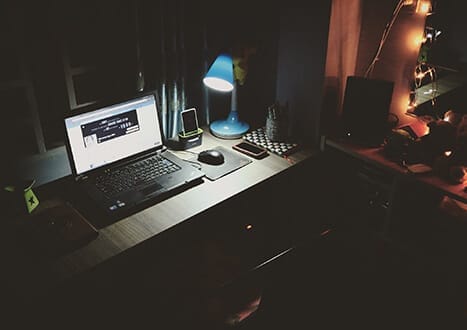


Top Microsoft Certification Exams
- AZ-104
- DP-700
- AZ-305
- AI-102
- AI-900
- AZ-900
- MD-102
- PL-300
- AZ-500
- SC-200
- MS-102
- SC-300
- SC-401
- AZ-700
- AZ-204
- DP-600
- SC-100
- MS-900
- AZ-400
- PL-200
- SC-900
- AZ-800
- AZ-140
- PL-600
- AZ-801
- PL-400
- MS-700
- DP-300
- DP-900
- MB-280
- PL-900
- DP-100
- GH-300
- MB-800
- MB-330
- MB-310
- MB-920
- MB-820
- MB-230
- MB-910
- MB-700
- MS-721
- PL-500
- GH-900
- MB-335
- GH-200
- MB-240
- MB-500
- DP-420
- AZ-120
- GH-100
- GH-500
- DP-203
- SC-400
- MB-900
- AZ-303
- 98-388
- 98-383
- MO-201
Site Search:







